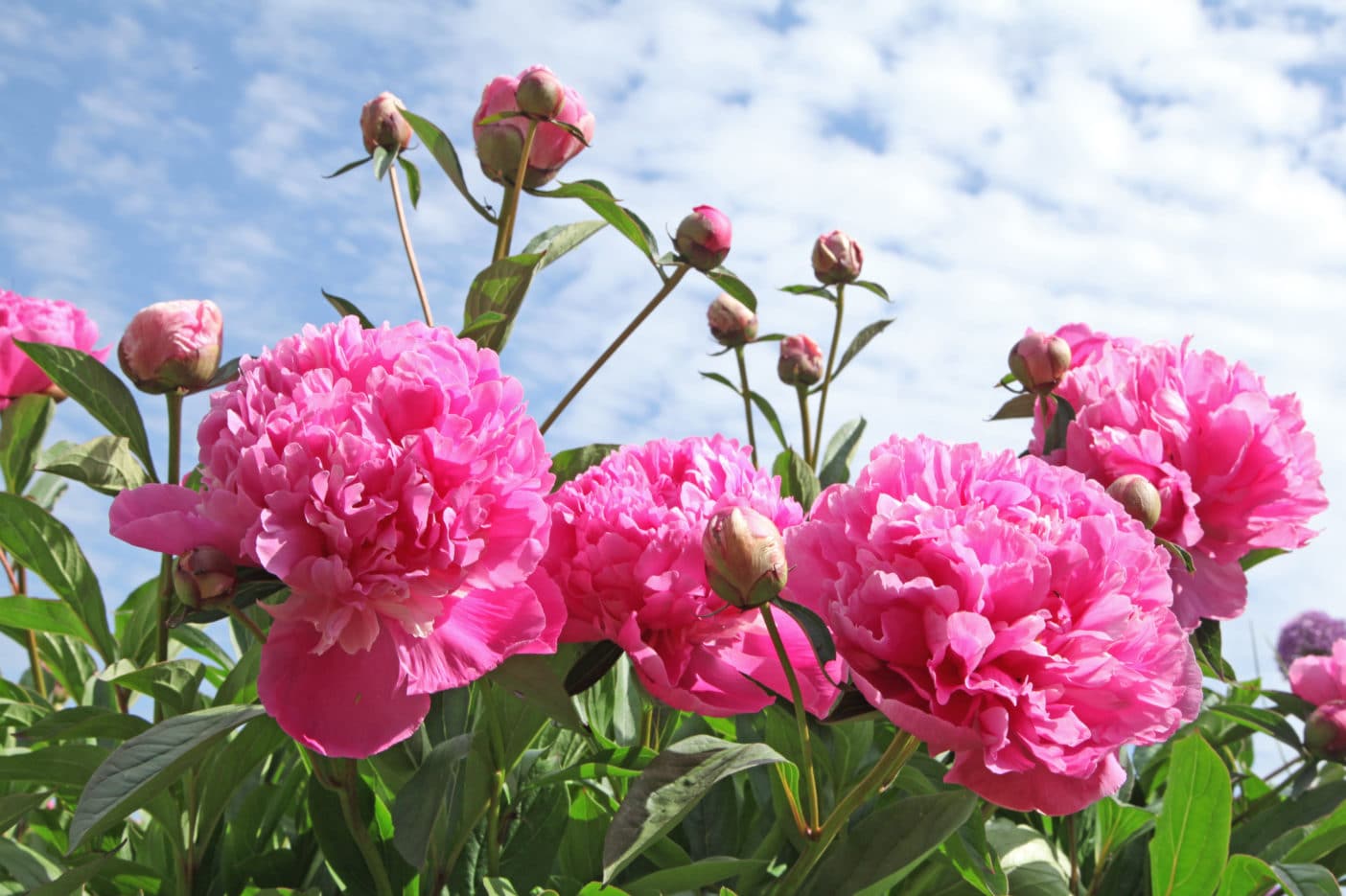Peony extract

Peony extract relates to Peony flower. It is at home in countless gardens and delights us from May to June with its fantastic flowering splendor: the peony (Paeonia). However, hardly anyone knows that the name peony refers to an entire genus of plants that includes more than 30 different species. The common peony (Paeonia officinalis), known to us from countless cottage gardens, is only one of these many species.
The fact that the peony not only looks beautiful, but also possesses many positive properties as an ancient medicinal plant, has also been somewhat forgotten in this country. It is a pity, because in traditional Chinese medicine it has played an important role for more than 1000 years. There, by the way, the dried root of the Chinese peony (Paenonia lactiflora) is mainly used. Around 40 percent of all TCM medical prescriptions contain peony extract at least as a partial component. This is due, among other things, to the plant’s extremely broad range of applications. Peony extract is used in TCM to treat rheumatism and inflammation as well as nervous disorders, allergies, autoimmune diseases and cramps.
Chinese studies with rheumatism patients also showed that rheumatism medications work better when combined with peony extract. The CFDA (China Food and Drug Administration) has therefore officially recognized the plant as a remedy for rheumatism. In animal experiments, the extract also protected against gout. Hildegard von Bingen once wrote that the plant can help with “three-day and four-day fevers.” However, the peony has not yet been officially recognized as a medicinal plant in Germany. Nevertheless, peony extract is being used more and more in cosmetic products in this country. And there is a good reason for this: peony extract is, after all, rich in paeoniflorin.
Paeoniflorin – the active ingredient
Paeoniflorin, the chemical compound with the CAS number 23180-57-6, can positively influence our skin in several ways. For example, scientific tests have shown that peony extract can regulate melanin production and significantly lighten the skin. Melanin is responsible for the individual color tone of our skin in the uppermost skin layer. The regulating and lightening effect is very interesting especially for people with disturbing pigment spots. For the same reason, however, unsightly skin redness can also be alleviated with peony extract.
The ingredient paeoniflorin contained in peony extract has both antioxidant and anti-inflammatory properties and inhibits platelet aggregation. This promotes blood circulation, which leads to a sustained boost in the supply of nutrients to the epidermis. Thus, peony extract clearly supports the renewal processes of the skin.
Peony extract in cosmetics
The skin then no longer appears as smooth and dries out considerably, it looks sallow because it can no longer reflect light as well. If inflammatory processes are added to this, which further increases oxidative stress in the cell walls of the subcutaneous blood capillaries and in the skin tissue, the overall blood circulation deteriorates. As a result, new blood vessels are formed only at a slower rate, so that the skin is less well supplied with nutrients. The skin renewal processes therefore no longer run optimally and the skin’s protective function is significantly impaired.
At least as remarkable is the fact that peony extract can protect our skin from harmful UV exposure. It also helps to improve skin cell activity. Mature skin particularly benefits from these advantages. After all, it often exhibits weakened skin barrier function, which automatically leads to increased susceptibility to oxidative stress. This in turn leads in most cases to a not inconsiderable loss of moisture.
Thanks to the improved blood circulation, the complexion looks much fresher and rosier. If peony extract is combined in cosmetic products with a vitamin complex (B5) or calcium, which also promotes the renewal processes, the effect is even stronger.
Currently, there are already cosmetics with peony extract on the German market. These are mainly products for day and night care, care masks, serums and eye creams. The extract is particularly suitable for mature and dry skin and for people with a disturbed skin protection barrier. For optimal effect, corresponding cosmetics should be applied regularly or even daily, if possible. Notable side effects or intolerances are not known so far.
Fact Sheet Peony Extract
INCI: Paeonia Officinalis Flower Extract
CAS number: 84929-40-8
EINECS number: 284-523-1
Description: Extract from the flowers of the peony Paeonia officinalis L
Appearance: a fine, gray to brown powder
Main ingredient: paeoniflorin
Solubility: soluble in ethanol, insoluble in water
Action: brightening, anti-inflammatory, antioxidant, protection against skin aging, reduction of wrinkles caused by UV radiation, reduction of lipid peroxide formation, promotes the synthesis of collagen fibers, provides a rosy, fresh complexion
Indications: for pigmentation disorders and for dry and mature skin
Fact Sheet Peony Root Extract
INCI: Paeonia Lactiflora Extract
Description: Root extract of the milk white peony
Effect and application: see peony extract
We like to work with these peony based active ingredients:
| Name | Company Name | INCI Name | Remarks |
|---|---|---|---|
| Lumiflora Peony | LABIO. Co., Ltd. | Butylene Glycol , Paeonia Albiflora Flower Extract | |
| Peony Extract PB | Crodarom | Aqua , Butylene Glycol , Paeonia Officinalis Flower Extract | |
| Peonimo | The Garden of Naturalsolution Co., Ltd. | Paeonia Officinalis Flower Extract | |
| WHITE PEO D | ACTYLIS | Aqua , Butylene Glycol , Paeonia Albiflora Flower Extract | |
| Activoil Spotless ZRO | Innovacos | Ribes Nigrum (Black Currant) Seed Oil , Octyldodecanol , Octyldodecyl Oleate , Octyldodecyl Stearoyl Stearate , Paeonia Suffruticosa Root Extract , Rosmarinus Officinalis (Rosemary) Leaf Extract | |
| Botaniceutical Plus-10 | The Garden of Naturalsolution Co., Ltd. | Paeonia Lactiflora Root Extract , Glycyrrhiza Glabra (Licorice) Root Extract , Polygonum Multiflorum Root Extract , Phellinus Linteus Extract , Morus Alba Bark Extract , Sophora Flavescens Root Extract , Cimicifuga Racemosa Root Extract | |
| Zley Paeonol | Zley Holdings (Suzhou) Co., Ltd | Paeonol | |
| SHAKUYAKU Liquid B | ICHIMARU PHARCOS CO., LTD. | Paeonia Albiflora Root Extract |
Peony extract in innovative cosmetics from Cosmacon
Several hundred years ago, peony extract was already used in traditional Chinese medicine to treat a wide variety of ailments and complaints. Whether rheumatism or inflammatory skin and mucous membrane diseases, the extract can visibly improve the skin’s appearance and alleviate skin redness or unwanted pigmentation spots. Thus, it is an excellent choice for innovative and sophisticated skin care products. Would you like to learn more about the positive properties of the peony? Please contact us! We at Cosmacon will advise and support you in the development of modern cosmetic products with peony extract.
Literature:
Lee KH, Lee JP, Kim W.Sci Rep. 2020 Dec 17;10(1):22132
Li H, Kang S, Sun L.J Healthc Eng. 2022 Mar 25;2022:3127698
Ekiert H, Klimek-Szczykutowicz M, Szopa A.Plants (Basel). 2022 Dec 5;11(23):3379
